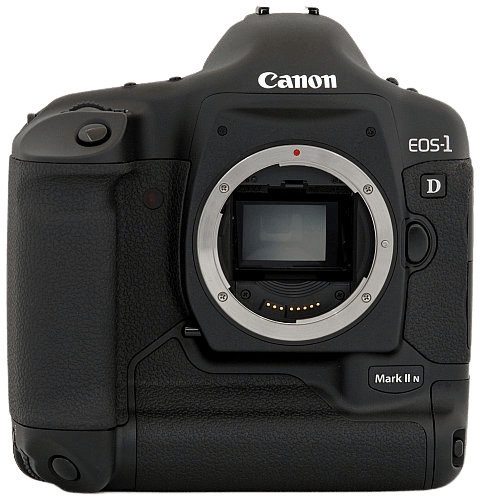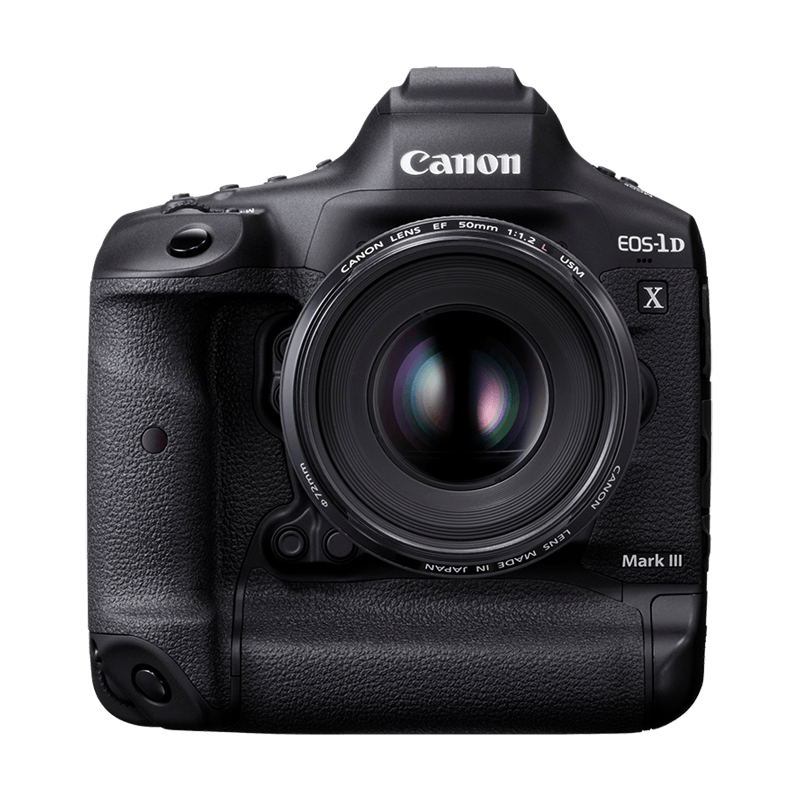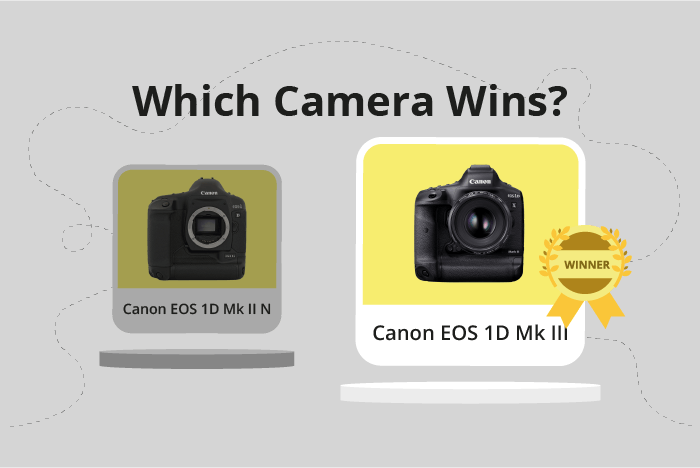Canon EOS 1D Mark II N vs EOS 1D Mark III Comparison
Canon EOS 1D Mark II N

Canon EOS 1D Mark III

The Canon EOS 1D Mark III emerges as the winner with a score of 52/100, surpassing the Canon EOS 1D Mark II N by 12 points. Both cameras share similarities as DSLRs, announced in 2005 and 2007, with almost identical sizes (156 x 158 x 80mm for Mark II N and 156 x 157 x 80mm for Mark III). However, the Mark III stands out due to its lighter weight (1335g) compared to the Mark II N (1565g) and a more affordable launch price of $4050 against the Mark II N’s $5986.
Despite the lower score, the Mark II N still has its merits, such as being a reliable camera from 2005. However, the Mark III’s higher score reflects its overall better performance and value. The choice between these two cameras ultimately depends on individual preferences and budget.
Canon EOS 1D Mark II N vs EOS 1D Mark III Overview and Optics
The Canon EOS 1D Mark III wins the optics comparison with a score of 50/100, while the Canon EOS 1D Mark II N scores 46/100. Both cameras have some similarities in their specifications. They both feature a CMOS sensor, APS-H sensor size, Canon EF lens mount, and no image stabilization.
The Canon EOS 1D Mark III has several advantages over the Mark II N. With 10.1 megapixels, it offers a higher resolution, allowing for more detail in images. The Mark III also has a faster shooting speed of 10 frames per second, which is beneficial for capturing fast-moving subjects. Additionally, the Mark III has a higher DXOMARK score of 71 for its sensor, indicating better overall image quality. The camera also features the more advanced Digic III processor, which improves overall performance and image processing capabilities.
On the other hand, the Canon EOS 1D Mark II N, although scoring lower in optics, still has some strengths. It features 8.2 megapixels, which is sufficient for most photography needs. Its shooting speed of 8.5 frames per second is still fast and capable of capturing action shots. Furthermore, its DXOMARK sensor score of 66, while lower than the Mark III, is still respectable and indicates decent image quality.
Given these comparisons, the Canon EOS 1D Mark III is the better option for photographers seeking higher resolution, faster shooting speed, and superior image quality. The Canon EOS 1D Mark II N, while not as strong in these areas, remains a viable option for those who prioritize affordability and are satisfied with its performance capabilities.
Canon EOS 1D Mark II N vs EOS 1D Mark III Video Performance
When comparing the Canon EOS 1D Mark II N and the Canon EOS 1D Mark III, it is important to note that neither camera has video functionality. This means that both cameras lack the ability to record video, making it unnecessary to compare their video capabilities.
Canon EOS 1D Mark II N vs EOS 1D Mark III Features and Benefits
The Canon EOS 1D Mark III emerges as the winner with a feature score of 49/100, compared to the Canon EOS 1D Mark II N’s score of 17/100. Both cameras share some common specifications, such as a screen resolution of 230,000 dots, no touchscreen, no flip screen, no GPS, and no Bluetooth.
The Canon EOS 1D Mark III outperforms the Canon EOS 1D Mark II N in several aspects. Firstly, the Mark III has a larger screen size of 3 inches, compared to the Mark II N’s 2.5-inch screen. This provides a better and more comfortable viewing experience for users. Additionally, the Mark III features built-in Wi-Fi, allowing for easy sharing and transfer of images. This is a significant advantage over the Mark II N, which lacks this connectivity option.
On the other hand, the Canon EOS 1D Mark II N does not have any noticeable advantages over the Mark III. Both models lack certain features such as a touchscreen, flip screen, GPS, and Bluetooth. The Mark II N’s lower feature score highlights its inferiority in comparison to the Mark III.
In light of these differences, the Canon EOS 1D Mark III stands as a superior camera due to its larger screen and Wi-Fi capabilities. The Mark II N, with its lower feature score and lack of distinct advantages, falls short in comparison. Therefore, the Canon EOS 1D Mark III is the better choice for photographers seeking a camera with enhanced features and a more user-friendly experience.
Canon EOS 1D Mark II N vs EOS 1D Mark III Storage and Battery
The Canon EOS 1D Mark III outperforms the Canon EOS 1D Mark II N in storage and battery with a score of 84/100 compared to 79/100. Both cameras share similarities, such as having two memory card slots and accepting SD and Compact Flash (Type I or II) memory cards. Neither camera offers USB charging capabilities.
The 1D Mark III’s advantage lies in its superior battery life, offering 2200 shots compared to the 1D Mark II N’s 1200 shots. Additionally, the 1D Mark III uses the LP-E5 battery type, while the 1D Mark II N uses the NP-E3. The 1D Mark III also supports SDHC cards, giving users more storage options.
There are no significant advantages for the 1D Mark II N in storage and battery. The Canon EOS 1D Mark III’s longer battery life and support for SDHC cards make it a better choice in this aspect.
Canon EOS 1D Mark II N vs EOS 1D Mark III – Our Verdict
Are you still undecided about which camera is right for you? Have a look at these popular comparisons that feature the Canon EOS 1D Mark II N or the Canon EOS 1D Mark III:

